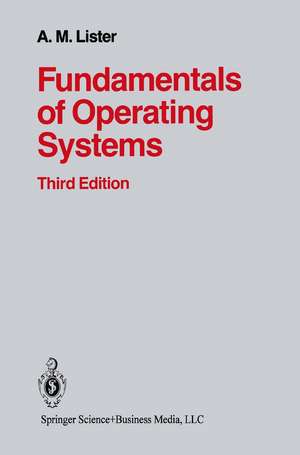Fundamentals of Operating Systems
Autor Listeren Limba Engleză Paperback – iul 2013
Preț: 326.46 lei
Preț vechi: 408.07 lei
-20% Nou
Puncte Express: 490
Preț estimativ în valută:
62.48€ • 64.99$ • 51.58£
62.48€ • 64.99$ • 51.58£
Carte tipărită la comandă
Livrare economică 12-26 aprilie
Preluare comenzi: 021 569.72.76
Specificații
ISBN-13: 9781489926883
ISBN-10: 1489926887
Pagini: 176
Ilustrații: XIII, 161 p.
Dimensiuni: 155 x 235 x 9 mm
Greutate: 0.25 kg
Ediția:3rd ed. 1984
Editura: Springer
Colecția Springer
Locul publicării:New York, NY, United States
ISBN-10: 1489926887
Pagini: 176
Ilustrații: XIII, 161 p.
Dimensiuni: 155 x 235 x 9 mm
Greutate: 0.25 kg
Ediția:3rd ed. 1984
Editura: Springer
Colecția Springer
Locul publicării:New York, NY, United States
Public țintă
Professional/practitionerCuprins
1 Introduction.- 2 Functions and Characteristics of an Operating System.- 3 Concurrent Processes.- 4 The System Nucleus.- 5 Memory Management.- 6 Input and Output.- 7 The Filing System.- 8 Resource Allocation and Scheduling.- 9 Protection.- 10 Reliability.- 11 Job Control.- Conclusion.- Appendix: Monitors.- References.












